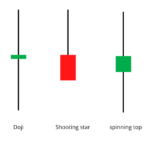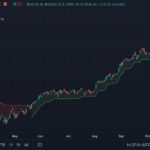There are many technical indicators and the list is endless. The question is, do you need to know all these indicators to be a successful trader? The answer is- no. Technical indicators are good to know, but they should never be the main tool in your analysis.
I have met many aspiring traders who spend a lot of time and effort in learning different indicators, but it proves to be in vain in the long run. Working knowledge of some basic indicators, such as those discussed in this module, is sufficient.
The checklist
A few chapters ago we started building a checklist that can guide a trader’s decision to buy or sell. Now is the time to revisit that checklist.
Indicators can be used by traders to confirm their trade decisions, it is good to check the indicator’s signal before placing a buy or sell order. You cannot depend on the indicator as much as the S&R, volume or candlestick patterns but it is always good to know what the basic indicators are suggesting. For just this reason, I would recommend adding the indicator to the checklist, but with one change. I’ll explain the change a bit later, but before that let’s revisit the checklist with this new point.
- The stock should form a recognizable candlestick pattern.
- S&R should confirm the trade. Stoploss price should be around S&R.
- The low of the pattern should be around the support for a long trade.
- For a short, the high of the pattern should be around the resistance.
- The volume should confirm the following..
- Above-average volume for both buy and sell days.
- Low volume is not encouraging, so don’t hesitate to trade where volume is low.
- The indicator should also confirm..
- Increase order size if the indicator has confirmed buy or sell
- If the indicators do not confirm, proceed with the basic plan of the trade
- There can be a possibility of fluctuations or variations in the two sub-points of the indicator itself.
Now imagine a situation where you are looking for an opportunity to buy shares of Karnataka Bank Ltd. One day, Karnataka Bank has set up a hammer and everything else on the checklist is getting fulfilled:
- The Bullish Hammer is a recognizable candlestick pattern.
- The low of the Bullish Hammer is also near the support.
- Volume is above average.
- There is also MACD crossover (Signal line is above MACD line)
I would happily buy Karnataka Bank after seeing all the four checklist points being met. So I place an order for 500 shares to buy.
But if you imagine a situation where the first 3 conditions of the checklist are met but the fourth condition (should also be confirmed by the indicator) is not being met. what do you think I should do?
I would still buy then, but instead of 500 shares, I would probably buy 300 shares.
With this, I am trying to explain to you when and how I am asking to use the indicators.
When the indicators confirm, I increase my order size, but when the indicators do not confirm I still proceed with my decision to buy, but I reduce my order size.
But I won’t do that with the first three checklist points. For example, if the Bullish Hammer low doesn’t hold near support, I will reconsider my plan to buy the stock. Maybe I should skip this opportunity altogether and look for another opportunity.
But I don’t trust the indicator in the same way. It’s always good to know what the indicators are telling you, but I don’t make my decisions based on that. If the indicators confirm, I increase the order size, if they don’t, I still proceed with my strategy.

Gaurav Heera is a leading stock market educator, offering the best stock market courses in Delhi. With expertise in trading, options, and technical analysis, he provides practical, hands-on training to help students master the markets. His real-world strategies and sessions make him the top choice for aspiring traders and investors.





